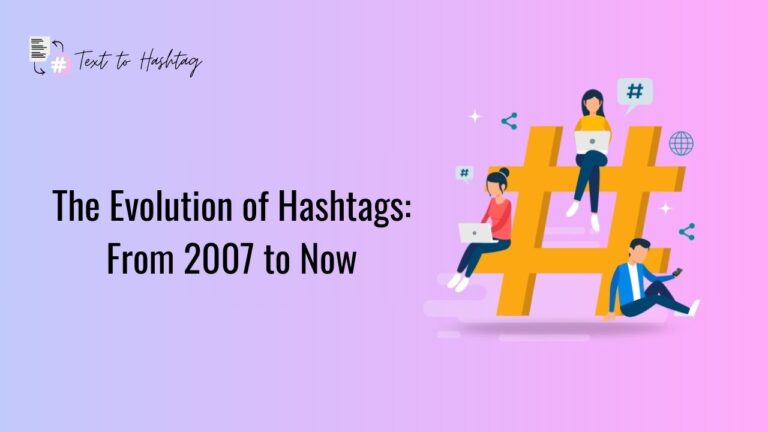The Anatomy of a Perfect Hashtag
In these days’ rapid-moving digital world, your content material can be exceptional, your message compelling, and your visuals 32012fd371b2d8bbf6e5e631dc96cdaf—but if your hashtag game is weak, you risk being invisible. Hashtags are the bridges between content and discovery. They connect brands with audiences, fuel conversations, and make campaigns go viral.
However, not all hashtags are created equally. Some generate massive engagement; others fall flat. What separates a successful hashtag from one that disappears into the digital void? That’s what we’re right here to discover.
Let’s dive deep into the anatomy of a perfect hashtag.
What Makes a Hashtag “Perfect”?
Before we break down structure and strategy, let’s define what we mean by a “perfect hashtag.”
A perfect hashtag is:
Relevant: It immediately ties into the topic, emblem, or campaign.
Memorable: easyrecallmind and spell.
Concise: short enough to examine speedily and fit in posts.
Unique: now not lost in a sea of unrelated content material.
Strategic: Drives engagement, discoverability, and conversions.
In short, it’s a tag that does more than categorize. It compels action.
The Science Behind Hashtag Structure
A hashtag may look simple—just a word or phrase with a pound symbol in front. But there’s a science to its structure. Let’s break it down.
1. Start with Clarity
Clarity is key. Users should understand the hashtag immediately.
- Avoid slang unless your audience uses it.
- Skip special characters and punctuation.
- Make sure it reads well in lowercase.
Bad example: #SheSellsSeaShells (confusing)
Good example: #BeachShopSale (clear and readable)
2. Use CamelCase When Needed
CamelCase (capitalizing each word) improves readability.
Example:
- #WorldMentalHealthDay is easier to read than #worldmentalhealthday.
3. Keep It Short but Informative
The ideal hashtag is 10–15 characters long. Long hashtags get cut off or ignored.
Too short: #Sale (too broad) Too long: #MegaBlowoutWinterApparelSale2025 (overkill)
Just right: #WinterSale2025
Types of Hashtags That Work
Perfect hashtags often fall into particular categories. Let’s discover them.
1. Branded Hashtags
Created with the aid of companies or people to represent their brand.
- Example: #OpenAI, #JustDoIt, #RedBullMusic
2. Marketing campaign Hashtags
Tied to a specific advertising campaign.
- Example: #ShareACoke, #BlackFridayDeals, #12DaysOfGiveaways
3. Community hashtags
used by like-minded businesses.
- Example: #MomsWhoCode, #YogaEveryDamnDay
4. Event Hashtags
Used all through activities, conferences, or product launches.
- Example: #WWDC2025, #NYFW, #GoogleNext
5. Trending Hashtags
are popular in real-time and often tied to current events.
- Example: #MondayMotivation, #Oscars2025
Keyword Research for Hashtag Success
Just like search engine optimization, hashtags benefit from keyword research. You want to use terms people are searching for.
Tools you may use:
- Hashtagify: analyze popularity and trends.
- RiteTag: suggests real-time hashtags.
- Instagram search Bar: type a tag to see post volume.
Pro tips:
- Mix high-volume with niche hashtags.
- Avoid banned or overused tags (e.g., #follow4follow).
- Always verify the meaning before jumping on a trend.
Hashtag Best Practices for Different Platforms
Each social media platform has its own hashtag culture. Here’s how to tailor your strategy.
Instagram:
- Ideal range: 11–20 hashtags.
- Place in the first comment or caption.
- Mix of branded, niche, and trending.
Twitter (X):
- Best with 1–2 hashtags.
- Use in-line within the tweet.
- Track trending tags with X’s explore page.
TikTok:
- Hashtags drive discovery.
- Use 3–6 highly relevant ones.
- Blend viral tags with campaign-specific ones.
LinkedIn:
- Professional tone.
- 3–5 hashtags per post.
- Stick to industry-relevant tags.
Real-World Case Studies: Perfect Hashtags in Action
1. Always – #LikeAGirl
This campaign flipped a common insult into an empowering movement. It sparked conversation and won multiple advertising awards.
Why it worked:
- Emotional appeal.
- Cultural relevance.
- Easy to remember and use.
2. ALS Association – #IceBucketChallenge
A fundraising phenomenon that raised over $115 million in the U.S. alone.
Why it worked:
- Strong call to action.
- Viral video content.
- Community involvement.
3. Airbnb – #WeAccept
Launched during a politically charged moment, this tag reflected the brand’s values.
Why it worked:
- Tied to a social issue.
- Brand-aligned messaging.
- Unified global campaign.
Tracking and Measuring Hashtag Effectiveness
You’ve created the perfect hashtag. Now what? Measure its impact.
Metrics to track:
Reach: total audience size.
Engagement: Likes, shares, comments.
Mentions: the number of times the hashtag is used.
Conversions: Signups, purchases, or downloads from hashtag campaigns.
Recommended tools:
| Tool | Features |
| Sprout Social | Hashtag performance & audience insights |
| Keyhole | Real-time analytics & sentiment tracking |
| Brand Mentions | Tracks reach and engagement across platforms |
The Future of Hashtags
Hashtags aren’t going anywhere, but they’re evolving.
Emerging trends:
AI-Generated Hashtags: tools suggesting personalized tags.
Voice-Activated Tags: Optimized for voice search.
Hyper-niche communities: Smaller, focused audiences.
Expect smarter, more contextual hashtag usage as platforms continue to refine algorithms and user behavior shifts.
Frequently Asked Questions
Q: How many hashtags are too many?
It depends on the platform. Instagram allows 30; however, the sweet spot is 11–20. Twitter and LinkedIn work best with fewer (1–5).
Q: Should I create my very own hashtag?
Yes, especially for branding or marketing campaign tracking. Just make sure it’s unique and easy to spell.
Q: Can hashtags help with Seo?
Indirectly. They boost visibility on social platforms, which can increase traffic to your site or profile.
Q: What is the evolution of hashtags from 2007 to now?
The evolution of hashtags started in 2007 on Twitter, proposed by user Chris Messina to group conversations. By 2009, Twitter auto-linked hashtags. Instagram embraced them for visual discovery, while Facebook, LinkedIn, and TikTok adopted them in the following years. Over time, hashtags evolved from basic categorization tools into powerful marketing assets used for branding, community-building, and real-time engagement.
Conclusion: Crafting Your Signature Digital Tag
A perfect hashtag is more than a trend-chasing buzzword. It’s a strategic, data-backed tool that connects your message to the right people, at the right time, on the right platform.
Whether or not you’re launching a new product, starting a movement, or without a doubt trying to reach a broader audience, consider: your hashtag is your digital handshake. Make it depend.
Use it wisely, monitor it closely, and refine it continuously. Because while done right, a hashtag doesn’t just ride a wave, it creates one.



